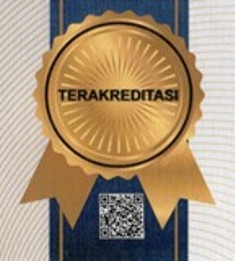Analysis of Carbon Stock Estimation in Nagari Rabi Jonggor Forest Area, West Pasaman Regency
DOI:
https://doi.org/10.24036/sjdgge.v7i1.505Keywords:
forest, carbon stock, oxygenAbstract
The potential of forest areas in Nagari Rabbi Jonggor to store carbon has not been studied, so there is no data on carbon stock storage and the estimated potential of oxygen produced. In order to quantify the potential of forest resources, specifically carbon and oxygen reserves produced, the author conducted a study on estimating carbon stocks and oxygen potential in the Nagari Rabbi Jonggor forest area. And this study aims to determine the forest use value of Nagari Rabi Jonggor Area, Gunung Tuleh District, West Pasaman Regency. This research was conducted in Nagari Rabi Jonggor Nagari Rabi Jonggor is one of the 19 main nagari in West Pasaman Regency, West Sumatra Province. Nagari Robi Jonggor is located in Gunung Tuleh District, West Pasaman Regency with an area of 289.98 km3 or 63.88% of the area of Gunung Tuleh District. The time of the study will be in May 2023. The method used is allometric using a plot system. The tools and materials used in this study are phi bands (measuring tapes), plastic ropes measuring 100 meters and 20 meters, plant scissors, analytical scales, pilox (to mark trees that have been measured) haga hypsometer, calculators, cameras, herbal equipment, tally sheets, GPS, compasses, clinometers, measuring instruments. The results showed that it can be seen that the total amount of biomass (Y) produced from the measurement is 7550.14. Where the tree that produces the largest biomass is a tree with a local name of rubber tree (Hevea brasiliensis) in sample 1 with a total biomass of 5294.23 and a tree that produces the lowest biomass is a tree species with a local name of rubber tree (Hevea brasiliensis) in sample II with a total biomass of 209.45. and it can be seen that the total amount of biomass (Y) produced from the dilangan measurement is 7550.14. Where the tree that produces the largest biomass is a tree with a local name of rubber tree (Hevea brasiliensis) in sample 1 with a total biomass of 5294.23 and a tree that produces the lowest biomass is a tree species with a local name of rubber tree (Hevea brasiliensis) in sample II with a total biomass of 209.45.
Downloads
References
ICRAF. (2017). Wood Density Database. db.worldagroforestry.org. Diakses Pada tanggal 5- 7- 2017.
Malamasam, D. (2009). Modul Pembelajaran Inventarisasi Hutan. Makasar: Fakultas Kehutanan. Universitas Hasanudin.
Manuhuwa, E. (2007). Kadar Air Dan Berat Jenis Pada Posisi Aksial Dan Radial Kayu Sukun (Arthocarpus communis, J.R dan G.Frest). Jurnal Agroforestry 2(1), 50.
Peraturan Pemerintah Republik Indonesia Nomor 28 Tahun 2011 tentang Pengelolaan Kawasan Suaka Alam dan Kawasan Pelestarian Alam.
Siwi, S. E. (2012). Kemampuan Ruang Hijau dalam Menyerap Gas Karbon Dioksida (Co2) di Kota Depok. (Tesis). Fakultas Matematika dan Ilmu Pengetahuan Alam Departemen Geografi. Universitas Indonesia. Depok.
Sutaryo, D. (2009). Penghitungan Biomassa: Sebuah Pengantar Untuk Studi Karbon dan Perdagangan Karbon. Bogor: Wetlands International Programme.
Tahura Inten Dewata. (2017). Laporan Rencana Pengelolaan Tahura Inten Dewata. Kementrian Lingkungan Hidup Dan Kehutanan Kabupaten Sumedang.
Wahyu, G.T. (2015). Mengenal Ruang Terbuka Hijau, Medco Foundation. http://www.medcofoundation.org/mengenal-ruang-terbuka-hijau.












